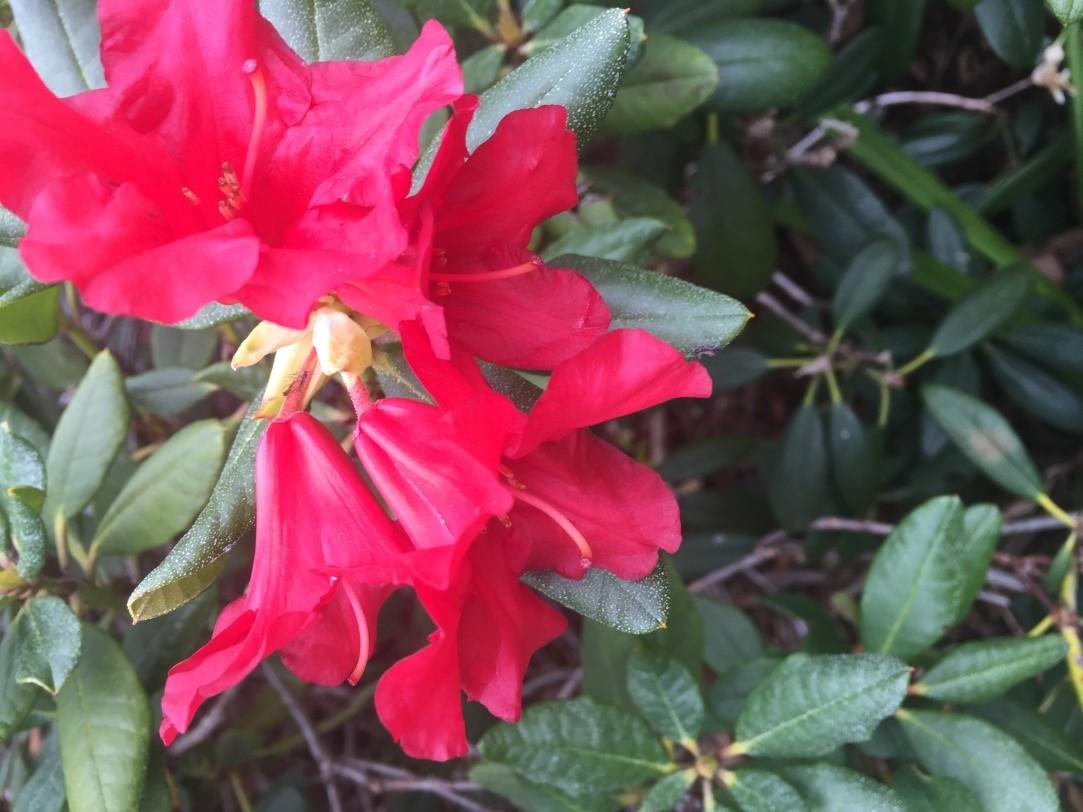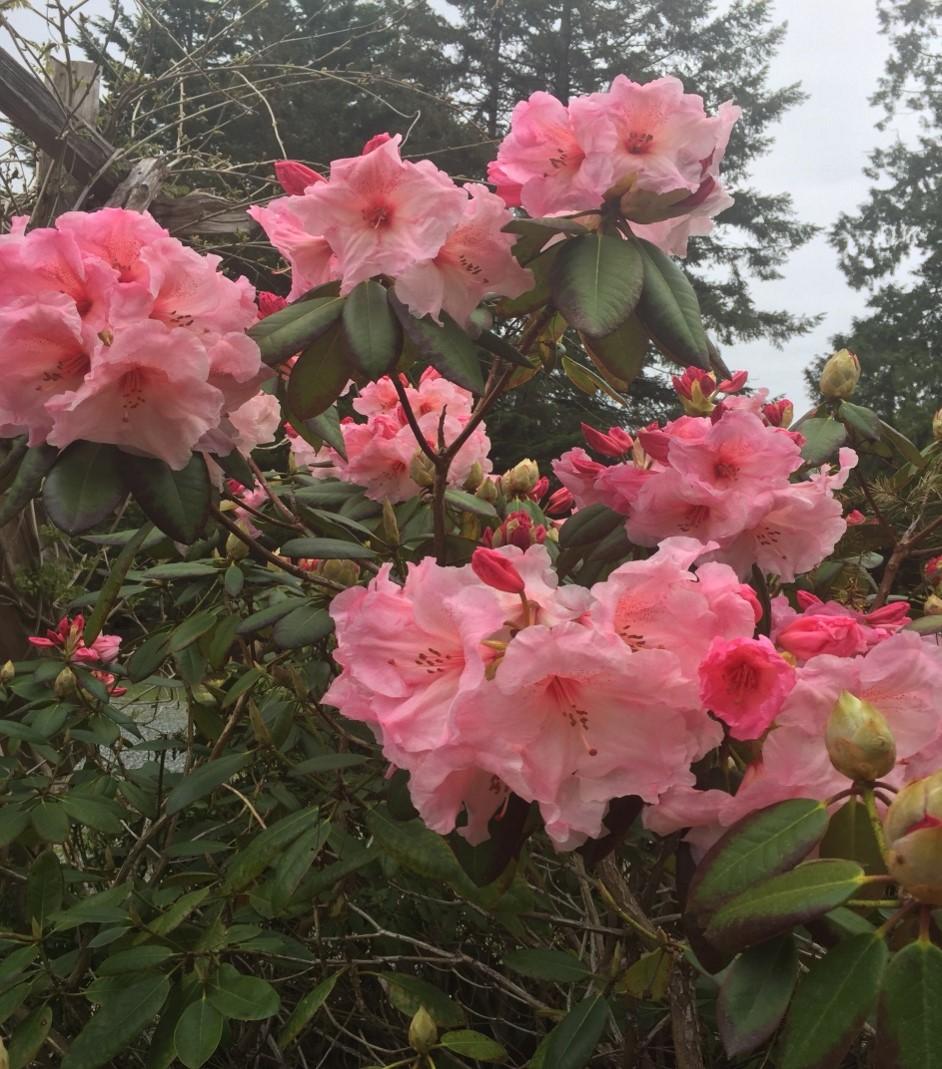by Vancouver Island Master Gardeners Association
Question: How do I control white flies on new Rhododendron leaves?
Answer: White flies generally infest tender new leaves of Rhododendron, causing mottled yellowing on the upper surface of the leaves and causing the margins to curl. They are usually limited to varieties that have hairy leaves. To check for the presence of whiteflies, shake the branches of symptomatic Rhododendrons to flush out adult whiteflies which look like tiny white moths. Whitefly adults and nymphs feed on the underside of the foliage. Examine the lower surfaces of leaves for the presence of nymphs, which are flat, yellowish green, and resemble scale insects. All stages occur on the undersides of leaves. Whiteflies are also known to spend winter under Rhododendron leaves without establishing on those plants. Check for eggs or larvae to be sure that there is a live population. The eggs show up as small black dots in circles, half circles or scattered on the underside of the leaves. There is only one generation of white flies a year.
White flies will leave a white, powdery residue on the leaf surface and can produce large amounts of sticky honeydew. White flies on Rhododendron are mainly an aesthetic pest and do not harm the plant unless it is a very heavy infestation.

In order to control white flies on Rhododendrons you want to be careful not to over fertilize. Whiteflies increase with foliar nitrogen levels. If it is necessary to feed rhododendrons try switching to a slow-release fertilizer and possibly one with less nitrogen.
Selection of Rhododendron species that are not as susceptible to white flies is another option. Rhododendron species with smooth surfaces underneath the leaf are most affected. Species with a thick and leathery epidermis are often unaffected by white flies.
You can also lightly vacuum plants in the morning to remove adult whiteflies when they are cold and less likely to fly away. With today's cordless vacuum cleaners this is an option even for larger gardens where you cannot run a power cord to your rhododendrons!
You could also attract beneficial insects or purchase some natural predators of this pest, which include ladybugs and lacewing larvae, which feed on their eggs, and the whitefly parasite, which destroys nymphs and pupae. For best results make releases when pest levels are low to medium.

Photos courtesy Wanda Brenton.
See our Gardening Advice to have your gardening questions answered by a volunteer from the Vancouver Island Master Gardeners Association.
See our Plant Picks for detailed write-ups of plants at Milner Gardens. Written by volunteers of the Vancouver Island Master Gardeners Association.

